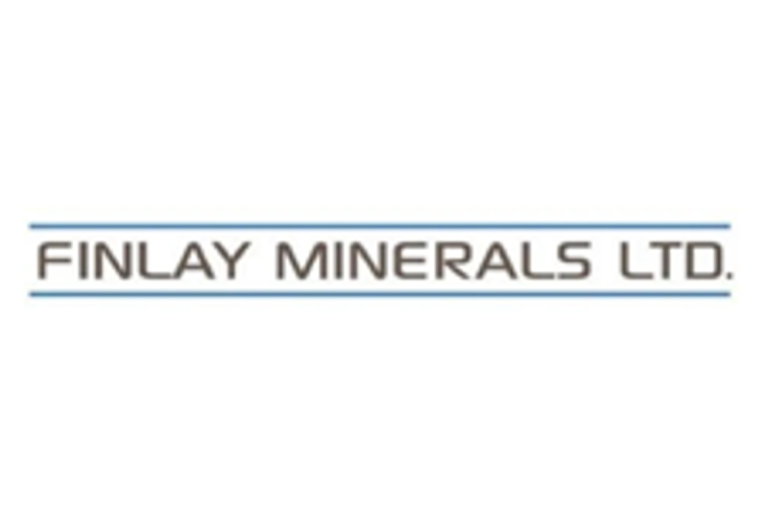Many believed the Cincinnati Bengals were dead and buried after the team lost four straight games following Joe Burrow’s significant turf toe injury.
Instead, Joe Flacco breathed life into the team by leading them to a 33-31 ‘Thursday Night Football’ upset over the Pittsburgh Steelers in his second start with the team.
Flacco and the Bengals played with poise Cincinnati’s offense hadn’t shown since Burrow exited the team’s Week 2 game against the Jacksonville Jaguars. The 40-year-old veteran demonstrated great chemistry with Ja’Marr Chase (16 catches, 161 yards, one touchdown) and Tee Higgins (six catches, 96 yards, one touchdown) throughout Thursday’s contest.
Meanwhile, the rest of Cincinnati’s offense played with a level of desperation it hadn’t previously shown, knowing another loss could do considerable damage to their playoff chances even at this early stage in the 2025 NFL season.
Now 3-4, the Bengals are just a game-and-a-half back of the Steelers in the AFC North race. They will get a chance to claw their way back to .500 in Week 8, when the Bengals face a New York Jets squad that has yet to win a game.
As for the Steelers, they’ll go back to the drawing board, knowing Aaron Rodgers’ two-interception outing coupled with a poor defensive performance cost them an opportunity to keep the Bengals buried.
USA TODAY Sports provided live updates, highlights and more from this week’s ‘Thursday Night Football’ matchup below:
Bengals vs. Steelers takeaways
- Joe 2.0: Maybe Joe Burrow was sharing some of his secret stuff. Joe Flacco did exactly what he should have done: Take advantage of the weapons at his disposal. Big games from both Chase and Higgins helped resuscitate the Bengals offense, and that should give Cincy fans a modicum of hope while Burrow recovers.
- Throwback Thursday: While Aaron Rodgers wasn’t quite vintage in this performance, he did move up the NFL’s career passing yards leader list, surpassing Ben Roethlisberger for fifth place all time.
- Mike drop? Mike Tomlin now has a relatively curious record on ‘Thursday Night Football.’ The Steelers head coach is 0-7 on the road vs. AFC North opponents on Thursdays, which is oddly specific and probably apropos of nothing. Still, 0-7 vs. anyone in any situation isn’t necessarily a positive.
Bengals vs. Steelers highlights
Bengals win after Aaron Rodgers’ Hail Mary knocked down
Rodgers’ 41-year-old arm still has plenty of juice, as the quarterback heaved a 70-yard prayer to the end zone. But the pass was knocked down just inside the goal line, giving Cincinnati the stunning win on Thursday night.
Bengals vs. Steelers score: Evan McPherson puts Cincy ahead late
Thanks to Higgins’ play, a few kneel downs and a short field goal off of Evan McPherson’s foot puts the Bengals up with seven seconds left in regulation.
Bengals 33, Steelers 31
Tee Higgins makes high-IQ play
The Bengals wide receiver hauled in a pass from Joe Flacco and had a clear lane to the end zone – but Higgins slid short of the goal line, forcing the Steelers into a predicament.
By sliding short of the end zone, the Steelers are forced to use one of their two remaining timeouts. That will allow the Steelers to kneel out the clock, leaving roughly 10 seconds until they have to try a chip-shot field goal to take the lead.
Steelers take lead after Aaron Rodgers hits Pat Freiermuth for 68-yard TD
For the first time since they led 10-7, the Steelers are back on top. The Bengals lost Freiermuth in coverage and allowed him to catch a deep ball from Rodgers on a second-and-20 and run untouched into the end-zone.
Chris Boswell made the extra point, and the Steelers are now winning 31-30 with 2:21 left in regulation.
Steelers force Bengals punt, get ball back with 2:46 remaining
T.J. Watt finally got more pressure on Joe Flacco, which helped the Steelers force the Bengals to punt. The Steelers get the ball back to their 42-yard line after a nice return by Ke’Shawn Williams with a chance to mount a potential game-winning TD drive.
Joe Flacco rushes for 12 yards on second-and-10
The Bengals pulled out a bold play on second-and-10 from their own territory. They ran a zone read with Flacco, a 40-year-old not known for his mobility.
It worked to perfection, as no Steelers players expected Flacco to run, allowing him to pick up the first down.
Steelers forced to punt after Pat Freiermuth can’t haul in third-and-4 pass
The Steelers went three-and-out following Cincinnati’s field goal. Aaron Rodgers tried to throw a quick strike to Freiermuth on third-and-4, but the tight end couldn’t bring it in amid tight coverage.
Corliss Waitman’s punt was a good one, checking up at the 9-yard line and being downed at the 10. The Steelers will need to quickly stop the Bengals, who are leading 30-24 with 5:16 left in regulation, to get another shot to mount a game-tying drive.
Ja’Marr Chase stats today
Chase has benefitted greatly from playing with Joe Flacco. The star receiver has been targeted 19 times, the most of any player in a game this season, and has made 14 catches for 128 yards and a touchdown.
Steelers defense limits Bengals to field goal
The Steelers let Joe Flacco and Ja’Marr Chase move down the field, but they ultimately came up with a key stop after Joey Porter Jr. had tight coverage on Tee Higgins on third-and-13.
Evan McPherson came on to attempt a 45-yard field goal. He makes it, putting the Bengals up 30-24 with 6:58 left in regulation.
Bengals 30, Steelers 24
Darnell Washington catches 2-yard TD from Aaron Rodgers
The Steelers have scored three touchdowns on Thursday. All have been by tight ends, with the 6-7, 264-pound Washington joining Pat Freiermuth and Jonnu Smith as scorers on a middle-of-the-field strike from Rodgers.
Chris Boswell’s extra point is good, and Cincinnati’s lead is down to 27-24 with 11:03 left in regulation.
Bengals 27, Steelers 24
Bengals vs. Steelers score: Joe Flacco hits Noah Fant for TD to open fourth quarter
Flacco continues to look sharp, capping off an 8-play, 67-yard drive with a pass over the middle of the field to the wide-open Fant.
Evan McPherson makes the extra point and takes a 27-17 lead with 14:57 left in regulation.
Bengals will face key third-and-goal to open fourth quarter, leading 20-17
The third quarter saw the Steelers cut into the Bengals’ lead thanks to an impressive third-and-18 touchdown pass from Aaron Rodgers to Pat Freiermuth, but Cincinnati continues to move the ball with ease against Pittsburgh’s defense.
When the fourth quarter opens, Joe Flacco and Co. will be facing a third-and-goal from the 5-yard line. The Bengals are outgaining the Steelers 345-244 and are winning the turnover battle 2-0.
Steelers cut into Bengals lead with 19-yard TD pass to Pat Freiermuth
The Steelers were facing a third-and-18 when Aaron Rodgers finally decided to throw a pass to the intermediate portion of the field. He got time to throw and managed to rip one up the seam to Pat Freiermuth, who was open and managed to catch the score with ease.
Chris Boswell’s extra point is good and the Bengals are now leading 20-17.
Bengals vs. Steelers score: Evan McPherson field goal lengthens lead
The Steelers managed to keep the Bengals out of the end-zone on third-and-goal, but McPherson drilled a 23-yard field goal with ease to extend the Bengals’ run of unanswered points to 20.
The Bengals are now up 20-10 and at up more than seven minutes of the third quarter on their first drive of the half. They have already possessed the ball for 21:45, and should be able to continue wearing out the Steelers’ defense.
Bengals 20, Steelers 10
Joe Flacco pushes ahead for 1-yard gain on fourth down
The Bengals convert their fourth down opportunity after the unsuccessful challenge. Flacco simply pushed ahead for a 1-yard gain on a quarterback sneak to create a first-and-goal opportunity.
Zac Taylor unsuccessfully challenges spot on Andre Iosivas catch
Iosivas was tackled a yard short of the line to gain on a third-and-7 catch. The Bengals lined up to go for it on fourth-and-1, but just one second before the play clock expired, Taylor challenged the spot.
A review revealed Iosivas was, in fact, short of the line to gain, costing the Bengals a timeout. The team had been planning to run a QB sneak with Joe Flacco before the stoppage, so it will be interesting to see if they choose that path again.
Aaron Rodgers stats at halftime
Rodgers started the game strong but threw a couple of interceptions in the second half. Overall, he has completed 13 of 19 passes for 118 yards, one touchdown and two interceptions.
Rodgers continues to have trouble pushing the ball down the field. If he can’t more consistently find and hit his targets in the intermediate-to-deep part of the field, the Bengals will continue to sit on the short routes.
Bengals vs. Steelers score: Evan McPherson makes field goal for halftime lead
After a slow start, the Bengals have dominated the Steelers. Cincinnati has scored 17 unanswered points while forcing Aaron Rodgers into multiple interceptions.
Joe Flacco has been in rhythm all night, completing 14 of 21 passes for 129 yards and two touchdowns in the first half. He has shown great chemistry with Ja’Marr Chase, who has seven catches for 61 yards and a touchdown, and Tee Higgins, who racked up three catches for 54 yards and a score.
Meanwhile, Chase Brown has had his best day of the season on the ground already, generating 74 yards on just five carries.
The Steelers defense will need to button things up in the second half after allowing three consecutive scoring drives to close the first half. If they can’t, Flacco and the Bengals will have a chance to snap a four-game losing streak and get back in the AFC North race.
DJ Turner rips interception out of DK Metcalf’s hands
The Bengals have created another big-time turnover. Aaron Rodgers nearly had a first-down completion to Metcalf, but the veteran receiver had the ball ripped out of his hands as he was going to the ground.
Turner managed to gain control of the ball and get a knee down in bounds. The Bengals will now have 40 seconds to mount a scoring drive before halftime. They have one timeout remaining.
Aaron Rodgers climbs to 5th on the NFL’s all-time passing list, passing Ben Roethlisberger
Rodgers has officially climbed ahead of Roethlisberger, a Steelers legend, on the NFL’s all-time passing list after his 15-yard completion to Jaylen Warren.
Below is a look at Rodgers’ present ranking on the passing list:
- Tom Brady: 89,214
- Drew Brees: 80,358
- Peyton Manning: 71,940
- Brett Favre: 71,838
- Aaron Rodgers: 64,089
Bengals vs. Steelers score: Joe Flacco hits Tee Higgins for 29-yard TD
Flacco and the Bengals offense are starting to heat up. After the interception, the 40-year-old veteran managed to move Cincinnati down the field in a hurry. Chase Brown had a 37-yard carry but the drive was capped off by a strike to Tee Higgins, which saw the 6-4 wideout run straight up the middle after the catch to get into the end zone untouched.
Evan McPherson makes the extra point, and the Bengals are ahead for the first time of the evening, 14-10.
Aaron Rodgers tosses deep-ball interception after overthrowing DK Metcalf
Rodgers tried to create a big play down the field to Metcalf, but the Bengals had quality double-coverage on the play.
Safety Jordan Battle came over the top to make the interception and had a nice return. However, the return was nullified after review, as Metcalf managed to touch Battle on the helmet as he went to the ground.
Bengals vs. Steelers score: Ja’Marr Chase gets Bengals on board with 8-yard TD from Joe Flacco
One play after dropping a potential touchdown, Chase was able to beat Jalen Ramsey for a score. Flacco managed to drop the lob pass in the bucket to him to get the Bengals on the board.
Evan McPherson makes the extra point and the Steelers’ lead is down to 10-7.
Steelers 10, Bengals 7
Joe Flacco threads pass to Ja’Marr Chase in end-zone, but WR can’t complete catch
Flacco made a near-perfect throw to Chase in the end-zone, but the veteran receiver wasn’t able to secure the ball going to the ground. He was clipped by Chuck Clark in a tight window, which caused him to be unable to secure the pass.
Originally, the officials ruled Chase’s catch a touchdown but it was overturned after an expedited review.
Ja’Marr Chase turns juggling catch into 8 yards
Chase nearly had a bad drop on a quick pass from Joe Flacco. Instead, he juggled it a few times and reeled it in, with his final bobble actually preventing him from being hit hard by cornerback Darius Slay.
How old is Aaron Rodgers?
The Steelers passer is 41 years old, and turns 42 on Dec. 2. He’s the oldest active player in the NFL.
Bengals vs. Steelers score: Pittsburgh settles for field goal
The Steelers got into a fourth-and-1 scenario and were poised to go for it. They were going to attempt a ‘Tush Push’ with tight end Connor Heyward, but the right side of Pittsburgh’s line jumped early.
After the penalty, Chris Boswell trotted out for a 41-yard field goal attempt. He nailed it to give the Steelers a 10-0 lead.
Steelers 10, Bengals 0
Jaylen Warren TD run wiped out by holding penalty
The Steelers briefly appeared to be in the end zone for a second time after a nice cut-back by Warren, but center Zach Frazier was penalized for holding on the play. The Steelers will now face a second-and-11 instead of doubling their lead.
Steelers leading Bengals 7-0 after strong first-quarter showing
The Steelers clearly have the advantage over the Bengals after 15 minutes. Pittsburgh has out-gained Cincinnati 122-44, as the Bengals have been unable to get any semblance of pressure on Aaron Rodgers without Trey Hendrickson.
Rodgers has completed 7 of 11 passes for 79 yards and a touchdown. He has been able to extend plays on multiple occasions, including one where he had 8.63 seconds to throw before finding Jonnu Smith for a touchdown.
Meanwhile, Joe Flacco has shown well considering he has been in Cincinnati for just 10 days. He has completed 4 of 8 passes for 36 yards but has been victimized by a couple of drops from Chase Brown and Andre Iosivas.
The Steelers will have the ball to start the second quarter and are already nearing Chris Boswell’s field goal range.
Steelers force another punt after critical Chase Brown, Andre Iosivas drops
The Bengals aren’t helping Joe Flacco much thus far tonight. Flacco did a great job sniffing out a first-and-10 blitz and delivered a perfect checkdown to Brown. The back would’ve had running room, but he failed to reel in the well-thrown pass.
Then, on third-and-11, Iosivas dropped a pass that hit him in the hands, forcing another Bengals punt.
Making matters worse, the Bengals ran into Steelers return man Ke’Shawn Williams while he tried to make a fair catch, resulting in a 15-yard penalty. Pittsburgh will get the ball at its own 27-yard line instead of its 12 as a result.
Steelers go three-and-out on second possession
The Steelers weren’t able to replicate the success they enjoyed during their first drive. They gained six yards on a dump-off to DK Metcalf but followed that up with back-to-back incompletions, including a flea flicker the Bengals snuffed out.
Corliss Waitman’s punt went 39 yards and pinned the Bengals at their own 17-yard line to start their second drive.
Was Andrew Whitworth on the Bengals?
Andrew Whitworth was a second-round pick for the Bengals in the 2006 NFL Draft. He quickly developed into a starter for them at left tackle, spending the 2006 through 2016 seasons in Cincinnati.
Whitworth spent the final five seasons of his career with the Los Angeles Rams and won Super Bowl 56 against the Bengals in his final NFL game.
Who did Joe Flacco play for?
Flacco played for the Cleveland Browns in 2025 before being traded to the Bengals. Below is a look at the full career timeline for the 40-year-old quarterback.
- Baltimore Ravens (2008-18)
- Denver Broncos (2019)
- New York Jets (2020)
- Philadelphia Eagles (2021)
- New York Jets (2021-22)
- Cleveland Browns (2023)
- Indianapolis Colts (2024)
- Cleveland Browns (2025)
- Cincinnati Bengals (2025)
Bengals forced to punt after first drive
Joe Flacco hit Tee Higgins on an impressive, 18-yard strike to convert a third-and-long and avoid a three-and-out, but a couple of nice tackles by DeShon Elliott and Juan Thornhill didn’t allow Cincinnati to advance further.
Ryan Rehkow’s punt traveled just 37 yards and Ke’Shawn Williams returned it 10 yards to the Steelers 26-yard line.
Steelers vs. Bengals score: Aaron Rodgers finds Jonnu Smith for 10-yard TD
The absence of Trey Hendrickson showed up in a big way on the Bengals’ first defensive drive. Rodgers had a whopping 8.63 seconds to through on a third-and-6 in the red-zone before finding tight end Jonnu Smith open in the end-zone for a score.
Chris Boswell made the extra point, giving the Steelers an early 7-0 lead on the road in Cincinnati.
Steelers 7, Bengals 0
Aaron Rodgers, Steelers take the field
The Steelers received the opening kickoff in Cincinnati, and take over at their own 35-yard line to get the game underway.
What channel is Bengals vs. Steelers on?
- TV channel (national): N/A
- TV channel (Pittsburgh market): ABC4
- TV channel (Cincinnati market): ABC9
The Bengals vs. Steelers matchup will air on Amazon Prime Video, meaning it will not air on traditional cable this week.
Viewers in the Pittsburgh TV market can catch the game on ABC4, while those in the Cincinnati market can view it on ABC9.
What year was Joe Flacco drafted?
Flacco was selected in the first round of the 2008 NFL Draft. The Baltimore Ravens chose the Delaware product 18th overall, making him the second quarterback selected after No. 3 overall pick Matt Ryan.
What year was Aaron Rodgers drafted?
Aaron Rodgers was selected in the first round of the 2005 NFL Draft. The Green Bay Packers made him the 24th overall selection in that year’s draft after one of the most notable draft slides in NFL history.
Many expected Rodgers to be the No. 1 overall pick, but the San Francisco 49ers instead spent the top selection on Alex Smith.
Darnell Washington size, height and weight
Washington – who has started the last three games for the Steelers at tight end – is listed at 6-7, 264 pounds on the Steelers’ official website. His size makes him a mismatch threat at the position and should eventually turn him into a threatening red-zone weapon.
Steelers vs. Bengals kickoff time
- Start time: 8:15 p.m. ET | 7:15 p.m. CT
The Bengals and Steelers are set to kick off at 8:15 p.m. ET on Thursday night. That’s the traditional start time for ‘TNF.’
Is Joe Burrow playing tonight?
No, Burrow is not playing in Week 7. He isn’t expected to return to the field until mid-December after suffering a severe turf toe injury in the Bengals’ Week 2 win over the Jaguars.
That said, Burrow is expected to be on the sidelines for Thursday’s divisional clash, per NFL Network’s Ian Rapoport.
Did Joe Flacco win a Super Bowl?
Yes, Joe Flacco won Super Bowl 47 following the 2012 NFL season with the Baltimore Ravens.
Flacco completed 22 of 33 passes for 267 yards and a three touchdowns during the game, a 34-31 victory for John Harbaugh’s Ravens over the San Francisco 49ers, then coached by Jim Harbaugh. Flacco was named Super Bowl MVP after posting a 124.2 passer rating during the game.
When will Joe Burrow return?
Burrow had surgery to repair a Grade 3 turf toe injury he suffered against the Jaguars. He is expected to miss a minimum of three months because of the injury.
That said, the exact timetable for Burrow’s return remains unclear. The Bengals have not provided one since the 28-year-old signal-caller got hurt, as Zac Taylor merely made reporters aware Burrow would need surgery to repair the malady.
The three-month timeline would put Burrow on track to return at some point in December at the earliest – barring any setbacks.
Bengals vs. Steelers stream
- Live stream:Amazon Prime Video
The Bengals vs. Steelers Week 7 matchup will air live on Amazon Prime Video for national viewers. Amazon Prime Video is the exclusive home of ‘TNF’ in 2025 and beyond.
Al Michaels will be on the call with Kirk Herbstreit at his side. Kaylee Hartung will provide updates from the field.
Watch ‘Thursday Night Football’ with a Prime Video subscription
Bengals vs. Steelers prediction
Joe Flacco certainly will do his best to make the most use of the Bengals’ weapons in his second go of it in their offense, but their issues extend far beyond the quarterback position. Cincinnati has had a tough time getting to the passer this year, while Aaron Rodgers has made a habit of getting rid of the ball quickly. That makes for a tough recipe for Cincinnati to defend, even at home. The Steelers win this one by a touchdown.
Prediction: Steelers 24, Bengals 17
Bengals vs. Steelers injury report
Bengals inactives vs. Steelers
Trey Hendrickson is the most notable name inactive for the Bengals tonight, as he is dealing with a back injury. The rest of the list:
Steelers inactives vs. Bengals
No real surprises on the Steelers’ inactive list vs. Cincinnati, with Calvin Austin headlining the group:
Bengals vs. Steelers live betting odds, moneyline, O/U
This post appeared first on USA TODAY










